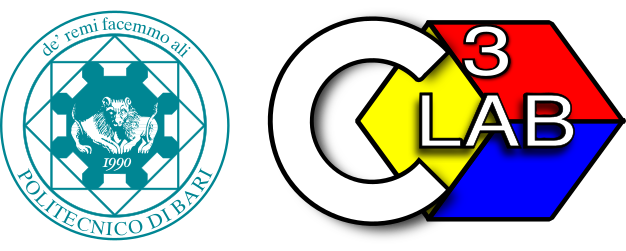|
|
| Riga 12: |
Riga 12: |
| | *'''Examples of LTI systems modelling'''. Electrical networks: integrator, derivative, lead, lag, lead-lag. Armature control of DC electric motor. | | *'''Examples of LTI systems modelling'''. Electrical networks: integrator, derivative, lead, lag, lead-lag. Armature control of DC electric motor. |
| | | | |
| − | * '''Analysis in the complex variable domain'''. Free evolution and the initial value problem. The forced response and the transfer function. | + | * '''Analysis in the complex variable domain'''. Free evolution and the initial value problem. The forced response and the transfer function. The pole-zero map and the impulse response time evolution. First-order and second-order systems: forced response to impulse, step and ramp. Influence of a zero on the step response of a first order and second order system. Transient response specifications: delay time, rise time, settling-time, peak time, maximum overshoot. |
| − | * '''Analisi nel dominio della variabile complessa'''. Espressione canonica della risposta libera e ruolo delle condizioni iniziali. La risposta forzata e la funzione di trasferimento (f.d.t.): forme canoniche della f.d.t., poli e zeri, costanti di tempo. Legame tra la mappa dei poli e zeri e l'andamento della risposta all'impulso. Modi di evoluzione. Risposte ai segnali canonici (impulso, gradino e rampa) dei sistemi di primo e secondo ordine. Influenza di uno zero reale sulla risposta indiciale di un sistema del secondo ordine. Risposte dei sistemi di ordine superiore e criteri di dominanza. Specifiche nel dominio del tempo.
| |
| | | | |
| − | '''Seconda Parte''' | + | '''Second Parte''' |
| − | * '''Stabilità'''. Definizioni e teoremi fondamentali sulla stabilità. Stabilità BIBO. Lemma e criterio di Routh. Casi particolari. Utilizzo del criterio di Routh. | + | * '''Stability analysis'''. Definitions and fundamental theorems of stability of LTI systems. BIBO stability. Routh Lemma (necessary condition) and Routh-Hurwitz criterion. Special cases in the construction of the Routh table. Examples. |
| | | | |
| − | * '''Proprietà dei sistemi in retroazione'''. Sistemi in retroazione ed errori in regime permanente. Classificazione dei sistemi in base al tipo. Ruolo degli ingressi. Coefficienti di errore. Il trattamento dei disturbi nei sistemi in anello aperto ed in quelli in anello chiuso. Effetto dei disturbi in relazione al punto di ingresso nell'anello di controllo. Compensazione in feedforward. Attenuazione delle variazioni parametriche. Sensibilità alle variazioni dei parametri della f.d.t. nel ramo diretto ed a quelli della f.d.t. nel ramo dì retroazione. Regole per il calcolo della sensibilità. | + | * '''Properties of closed-loop systems'''. Steady state error in feedback control systems. Error coefficients (position, velocity, acceleration). Disturbance rejection in open-loop and closed-loop systems. Feed-forward compensation. Sensitivity to parametric variations in the transfer function of the forward branch and feedback branch. The sensitivity function. |
| | | | |
| − | *'''Luogo delle radici'''. Luogo delle radici complementare. Regole per il tracciamento del luogo. Taratura del luogo. Il luogo delle radici nei procedimenti di sintesi. Esempi. | + | * '''Root locus'''. Root locus and complementary root locus. General rules to construct the root loci. Root locus for control system design (basic concepts). |
| | + | Examples. |
Examples.
